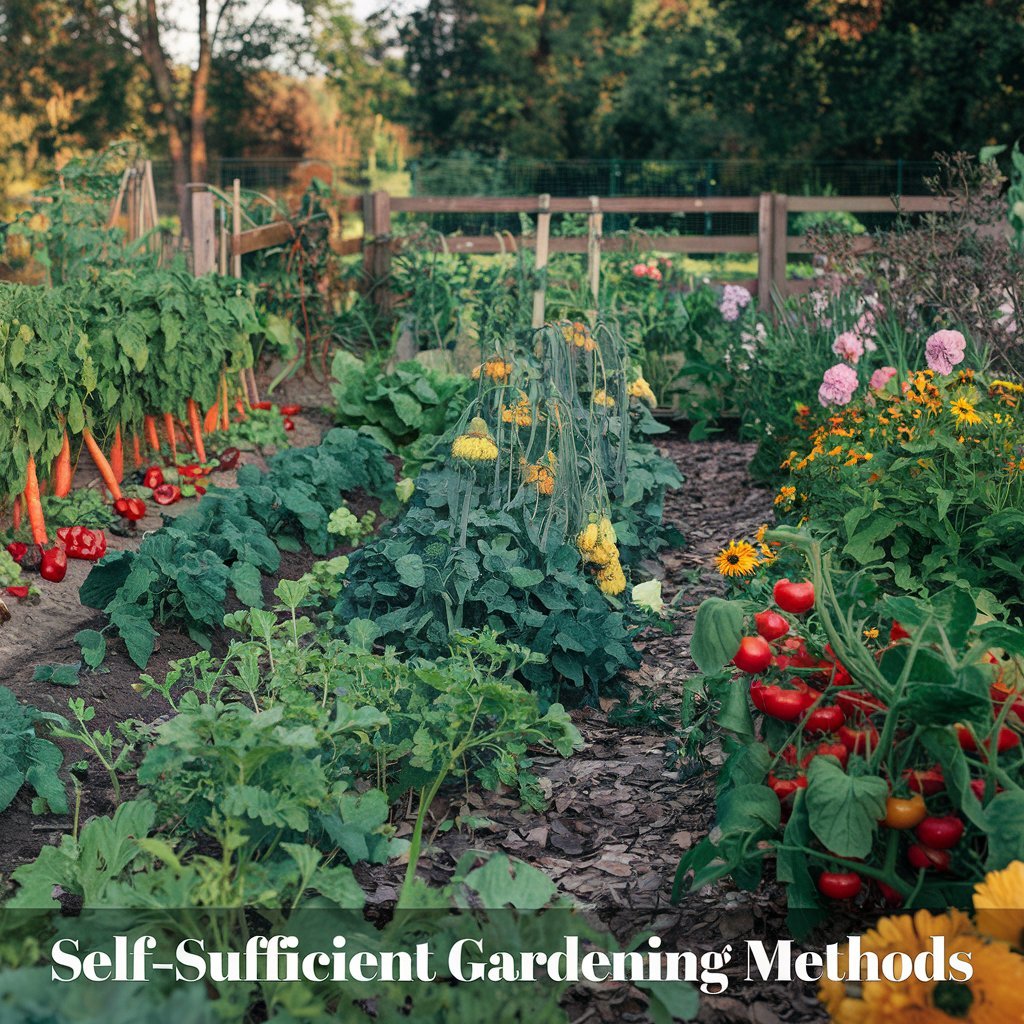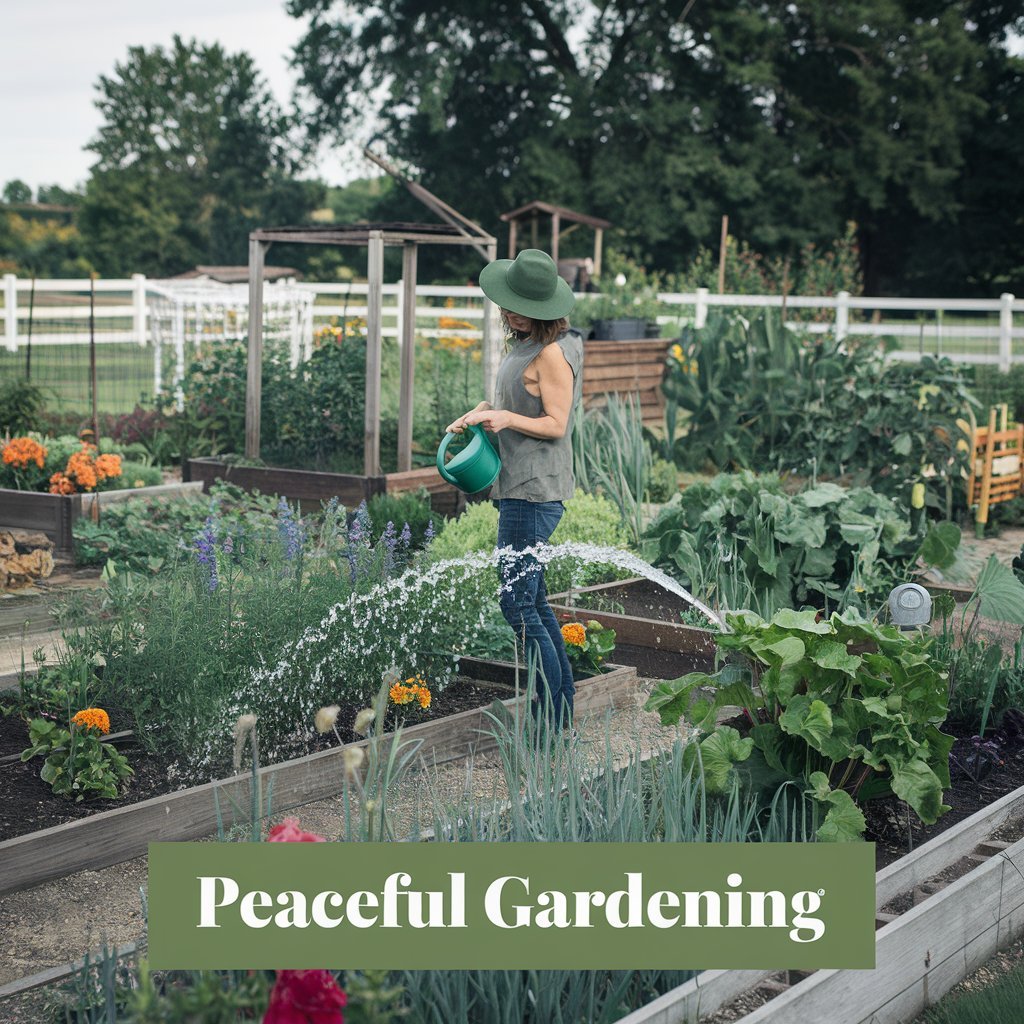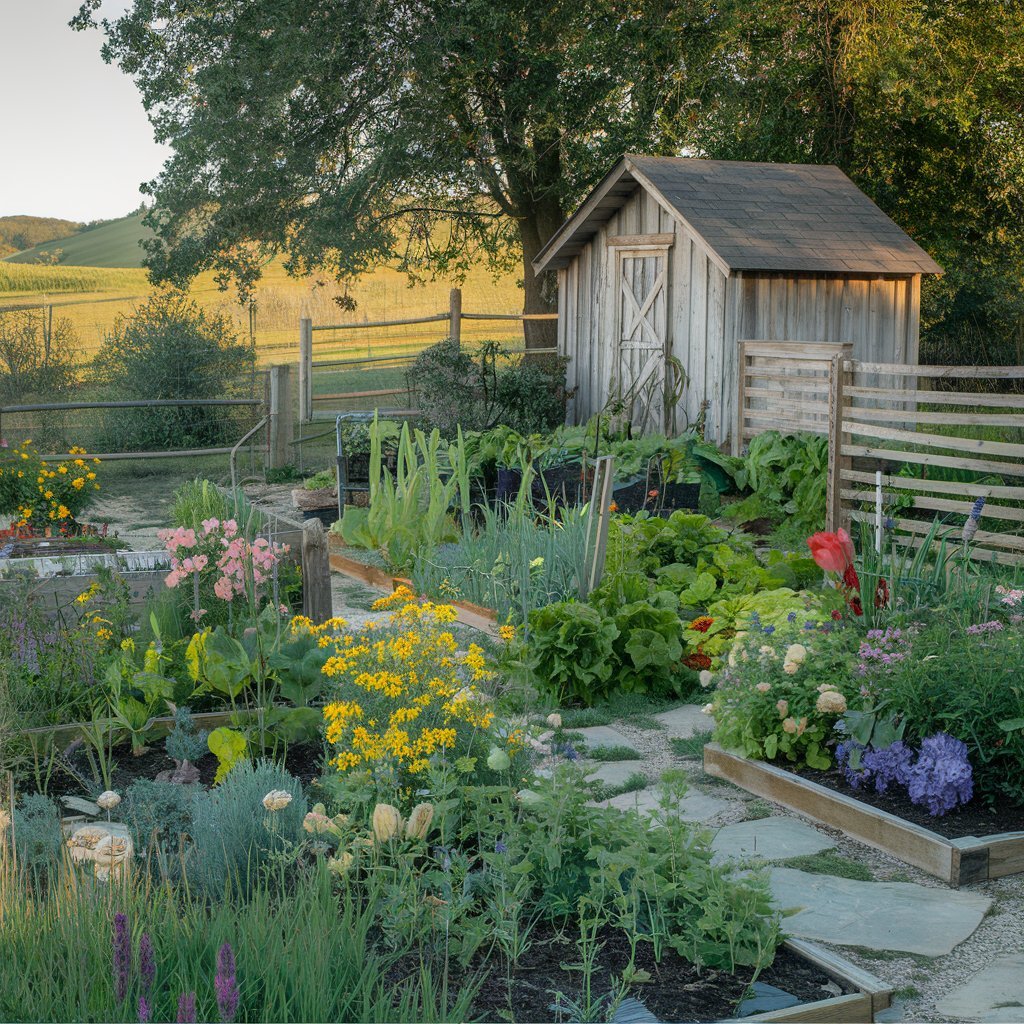Key Concepts of Self-Sufficient Gardening
Seed Saving and Adaptation
Let’s talk seeds—saving them is where the magic of self-sufficient gardening methods truly shines. Imagine grabbing seeds from your garden’s rockstars each season. Over time, these seeds become like tiny superheroes, perfectly tuned to thrive in your garden. This means fewer store runs for you and stronger plants that just get what your soil needs (Growing in the Garden).
Getting the knack of starting plants from seeds isn’t just about bragging rights. It’s about a little effort now paying off big-time later. A single packet, costing just a few bucks, can turn into a garden full of veggies. Stash them right, and those seeds will stick around for years, sprouting into tasty greens season after season (Growing in the Garden).
Seed Packet Cost and Yield Table:
| Seed Type | Packet Cost ($) | Seeds per Packet | Seed Longevity (Years) |
|---|---|---|---|
| Tomato | 3 | 50 | 4 |
| Lettuce | 2 | 100 | 5 |
| Carrot | 3 | 200 | 3 |
Want more tips? Peek at our page on sustainable gardening practices for fresh ideas.
Propagation for Perennials
Perennials are like the reliable old friends of gardening—they come back year after year with minimal fuss. Plant them once, and let them do their thing, making them perfect for those looking to really lean into self-sufficient living.
Consider these perennials your gardening gold:
- Asparagus
- Strawberries
- Artichokes
- Rhubarb
- Perennial kale
- Jerusalem artichoke
- I’itoi onions
- Longevity spinach
- Peppers
These hardy plants mean consistent harvests without the yearly headache of planting new crops (Growing in the Garden). Thinking about adding perennials to your mix? Check out our guide on off-grid homestead gardening for more insights.
To get the most bang for your buck, mix in some organic gardening techniques and go for methods that keep your garden thriving long-term. For a deeper dive into making your garden as efficient as possible, head over to our off-grid gardening tips guide.
Sprinkle in these strategies, and you’ll turn your garden into a self-sustaining oasis that’s less work and more reward each year. Enjoy the journey!
Rocking Your Self-Sufficient Garden: Going Green and Loving It
Want to take your self-sufficient garden to the next level? Dive into these two game-changing methods that are essential for a thriving, eco-friendly garden:
Composting: Nature’s Way of Saying Thanks
Ever thought of turning your garden waste and kitchen scraps into gardening gold? Composting is your answer! By transforming leftover food and yard clippings into rich compost, you’re giving your garden a huge boost. This homemade fertilizer jazzes up your soil, ramps up beneficial microbes, and keeps your plants living their best lives.

Why Compost?
- Better Soil, Better Plants: Compost enhances soil texture, making it easier for roots to grow.
- Water Wisely: Compost helps the soil hold onto water, reducing the need to water your plants as often.
- Keep Unwanted Guests at Bay: Suppresses plant diseases and pests naturally.
- Save Green on Green: Cuts down on the need for chemical fertilizers, which is great for your wallet and the planet.
Curious about making your own compost? Check out our guide on eco-friendly gardening practices.
Rainwater Collection: Nature’s Freebie
Why pay for water when you can get it for free from the sky? Collecting rainwater is one of the smartest and most sustainable ways to keep your garden hydrated. Plus, it’s a great way to slash those water bills.
Cool Ways to Collect Rainwater:
- Rain Barrels: A simple barrel under your gutter’s downspout. Easy-peasy.
- Rain Chains: Fancy chains that direct water into collection containers while looking stylish.
- Rain Gardens: Gardens designed to soak up rainwater runoff, perfect for preventing erosion and creating a lush space.
| Method | Cost | Installation Ease | Maintenance |
|---|---|---|---|
| Rain Barrels | Low | Super Simple | Low |
| Rain Chains | Moderate | Pretty Easy | Low |
| Rain Gardens | High | Medium Effort | Medium |
Perks of Rainwater Collection
- Save Cash, Save Water: Ditch those sky-high water bills.
- Nature’s Purest: Rainwater is free from chemicals, making it better for your plants.
- Fight Erosion: Helps prevent your soil from washing away.
Important tip: Always check your local laws before setting up a rainwater system. Discover more off-grid gardening hacks and natural gardening methods to create a garden that’s truly sustainable.
By mixing these eco-friendly practices into your gardening routine, you’ll not only be growing a fantastic garden but also doing your bit for Mother Earth. Happy gardening, folks!

Get the Most Out of Your Garden
Trying to squeeze every bit of potential out of your garden? This article dives into the magic of growing up (literally) and keeping your plants cozy with hoop houses. Let’s dig in!
Going Up: Vertical Gardening Hacks
Vertical gardening is like turning your garden into a high-rise apartment. By making plants grow up instead of out, you make the most of your space without needing more land.
Top Tips:
- Trellises: Train climbers like tomatoes and beans to scale up.
- Garden Shelves: Stack small pots on multiple levels.
- Hanging Baskets: Suspend herbs and small veggies up high.
Why It Rocks:
- Saves Space: Grow more green in less ground.
- Boosts Airflow: Keeps diseases and pests away.
- Easy Picking: No more bending over; harvesting made simple.
Visualize this layout for max space efficiency:
| Method | Suitable Plants | Benefit |
|---|---|---|
| Trellises | Tomatoes, beans, cucumbers | Bigger yields |
| Garden Shelves | Herbs, lettuce, strawberries | Space-smart |
| Hanging Baskets | Herbs, cherry tomatoes | Grab and go |
For more on how to make your garden the envy of the neighborhood, check our off-grid gardening tips.
Keep It Cozy: Hoop Houses to the Rescue
Hoop houses, or polytunnels, can make it feel like summer all year round for your plants. These simple structures protect your babies from harsh weather, giving you more growing days.
How They Work:
- Hoops covered with plastic make a mini-greenhouse.
- Traps in heat and moisture; think tropical vacation for your veggies.
- Shields from frost, heavy rain, and strong winds.
Quick Start Guide:
- Pick Your Spot: Find a sunny place.
- Build a Frame: Arched with PVC pipes or metal rods.
- Cover Up: Use plastic sheeting and secure against winds.
- Keep an Eye on Temps: Monitor with a thermometer.
Why You’ll Love It:
- Longer Harvest Season: Start early in spring, keep going in the fall.
- Fewer Pests: Less of a buffet for bugs.
- Better Growth: Stable conditions mean happy plants.
Peek at how hoop houses extend your growing seasons:
| Season | Crop Examples | Hoop House Gain |
|---|---|---|
| Spring | Lettuce, spinach | Early plant start |
| Summer | Tomatoes, peppers | Best growing conditions |
| Fall | Kale, broccoli | Keep harvesting longer |
| Winter | Carrots, garlic | Frost protection |
By combining vertical gardening with hoop houses, you’ll be squeezing every bit of goodness out of your garden, making strides towards being self-sufficient. For more tips and tricks, check out our sustainable gardening practices and organic gardening techniques. Happy growing!
Getting Your Hands Dirty in the Garden: No Space, No Sun, No Problem!
Starting a self-sufficient garden sounds awesome until you realize you’ve got barely any space or a sun-stingy yard. But don’t let that stop you! Here’s how to tackle these common gardening headache with some cool and practical tips.
Squeezing the Most Out of Small Spaces
So you’ve got a tiny patch? No problem! Even the teeniest spaces can be turned into leafy paradises. Check out these nifty tricks:
- Vertical Gardening: Stack ’em up! Use trellises, wall planters, and hanging baskets to grow plants upwards. Perfect for peas, beans, and cucumbers that love to climb.
- Container Gardening: Plant veggies, herbs, and even mini fruit trees in pots. Stick ’em on your balcony, porch, or any little outdoor corner.
- Square Foot Gardening: Break your garden beds into bite-sized sections for a variety of crops in a squishy spot.
Here’s a cheat sheet for the best small-space crops:
| Plant Type | Small Spaces Favorites |
|---|---|
| Leafy Greens | Spinach, Lettuce |
| Root Veggies | Radishes, Carrots |
| Vining Plants | Peas, Beans |
| Herbs | Basil, Parsley |
Wanna learn more cool and eco-friendly garden tricks? Jump over to our sustainable gardening page.
Making Friends with the Shade
No bright sunshine? No sweat! Plenty of plants are happy chilling in the shadows.
- Leafy Greens: Veggies like spinach, arugula, and kale are cool with partial shade.
- Shade-Tolerant Herbs: Parsley, mint, and cilantro don’t mind half the sunlight, thriving with just 3-4 hours of indirect light.
- Ornamentals: Beauties like hostas, ferns, and begonias adore shaded spots.
Here’s your quick ref for shade-loving plants:
| Plant Type | Thrives in Shade |
|---|---|
| Leafy Greens | Kale, Spinach |
| Herbs | Mint, Parsley |
| Ornamentals | Hostas, Ferns |
Embrace these plants and tips to turn your dim corners green. Curious for more? Check out our guides on off-grid homestead gardening.
Rocking Your Organic Garden Despite Space and Shade
With these smarty-pants gardening moves, you’ll turn even the smallest shady spots into lush, organic gardens. Want to geek out more on going all organic? Pop by our organic gardening section.
Ready to spruce up your patch? Go on—flex that green thumb and show those garden hurdles who’s boss!

My name is Michelle Warren, and I’m the founder of Peaceful Gardening. As a 10-year breast cancer survivor, I’ve discovered the profound therapeutic power of gardening. This journey has not only helped me recover but has also become my passion and a source of ongoing peace and joy.
Peaceful Gardening was born from my desire to share the healing benefits of gardening with others. Whether you’re facing health challenges, dealing with stress, or simply looking to connect more deeply with nature, this space is for you.
Over the past decade, I’ve cultivated not just plants, but a deep understanding of how gardening can positively impact mental health. I’ve worked with local community gardens, led workshops on mindful gardening practices, and collaborated with mental health professionals to develop gardening-based stress reduction programs.
Peaceful Gardening was born from my desire to share the healing benefits of gardening with others. Whether you’re facing health challenges, dealing with stress, or simply looking to connect more deeply with nature, this space is for you.
Here, you’ll find evidence-based advice on using gardening as a tool for mindfulness, stress relief, and emotional healing. I share personal stories, practical tips, and scientifically-backed information on how to create your own therapeutic garden space, no matter the size of your yard or balcony.
My mission is to help you discover the joy, peace, and healing that comes from nurturing plants and connecting with nature. Join me in exploring how the simple act of tending to a garden can transform your mental and emotional wellbeing.
Welcome to Peaceful Gardening – let’s grow together towards better mental health!”

